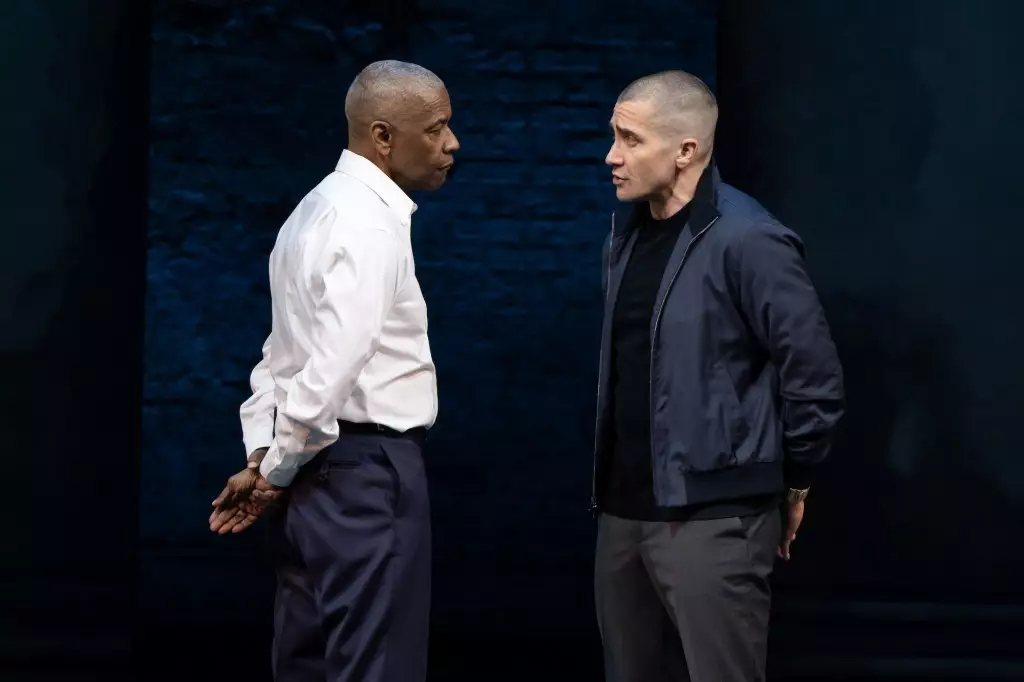Broadway has recently reclaimed its status as an artistic powerhouse, achieving a remarkable post-pandemic feat with box office receipts reaching $1,801,023,860 for the 2024-2025 season. This figure eclipses the record set during the pre-Covid season of 2018-2019 at the same point in the year. The resurgence of interest in live theater can largely be attributed to star-studded productions that have taken center stage. Works such as “Good Night, And Good Luck,” featuring Hollywood heavyweight George Clooney, and the powerhouse duo Denzel Washington and Jake Gyllenhaal in “Othello,” have transformed Broadway into a lucrative entertainment hub. With massive weekly earnings that regularly surpass $3 million, these productions have undeniably sparked a renewed fervor for theatrical experiences.
The significance of this achievement cannot be overstated. For years, Broadway has been synonymous with the glittering allure of live performance, and the pandemic dealt a devastating blow to its vibrancy. The barriers to entry for audiences had risen sharply due to safety protocols and evolving entertainment preferences, challenging the fabric of live theater. Now, the figures released by The Broadway League indicate a resurgence that feels almost celebratory yet still demands reflection.
The Complexities Behind the Numbers
Despite the jubilant headlines, industry leaders like Jason Laks, the President of The Broadway League, advocate for a grounded perspective regarding this milestone. While the financial successes of select productions shine brightly, they overshadow the stark reality faced by many lesser-known shows. Laks pointed out that the industry’s record grosses can be misleading, hinting at a disconcerting truth: without the triumph of these few blockbuster productions this season, the numbers would likely still lag behind those of pre-pandemic years.
This situation raises critical conversations about equity and sustainability in the arts. The reliance on high-profile, star-studded productions creates an uneven playing field, risking the extinction of smaller, innovative shows that contribute significantly to Broadway’s cultural tapestry. Laks urges stakeholders to recognize that the definition of success must expand beyond just financial metrics; it must embrace versatility, inclusion, and long-term viability for all productions.
The Rising Costs Challenge
Another significant hurdle facing Broadway is the constantly rising costs associated with production. From mounting expenses like set design and talent remuneration to the logistical challenges of seeking investors for new shows, the contemporary landscape is fraught with financial instability. Investing in new creative endeavors becomes increasingly arduous when the window for recuperation narrows, ultimately affecting the diversity of narratives and voices represented on stage.
In this precarious environment, the vitality of Broadway hinges on confronting these challenges head-on. Rather than viewing rising costs merely as obstacles, industry participants must engage creatively with these realities. This may involve discussing new economic models, collaborative consortia among theaters, or innovative funding avenues. The future of Broadway cannot be insured solely on the backs of a few star-driven productions; it must be a collective effort to support diverse storytelling.
Audiences in Flux: Changing Dynamics and Preferences
Data from the current season indicates an average paid admission of $128.83, a rise from $124.08 in the 2018-2019 season. Yet, total attendance figures show marked differences, revealing that while ticket prices have increased, a gap persists in audience numbers—13,979,961 this season versus 14,453,937 in the pre-Covid benchmark. Such figures prompt introspection about audience engagement and what draws patrons to the theater today.
With many entertainment options available beyond traditional theater, there’s a pressing need to innovate and connect with audiences. Revitalizing Broadway means not only attracting those who frequented once but also kindling interest among newer demographics. This can be achieved through dynamic marketing strategies, a broader range of programming, and inclusive practices that resonate with an increasingly diverse audience.
Embracing a New Era of Possibility
As Broadway celebrates record box office figures punctuated by blockbuster productions such as “Glengarry Glen Ross” and “Wicked,” it faces a pivotal moment of reflection and opportunity. The challenges ahead may be daunting, but they also present an impetus for reimagining what the future of theater can and should look like. The industry must be brave enough to dive deeper into its creative reservoirs, fostering a supportive ecosystem that elevates new work while sustaining crowd-pleasers.
Ultimately, it is a time of mixed emotions—elation from record-breaking revenues and concern for the industry’s long-term health. Broadway stands on the precipice of a new era, and it is imperative that it embraces inclusivity, sustainability, and artistic innovation to ensure its vibrancy for generations to come.
